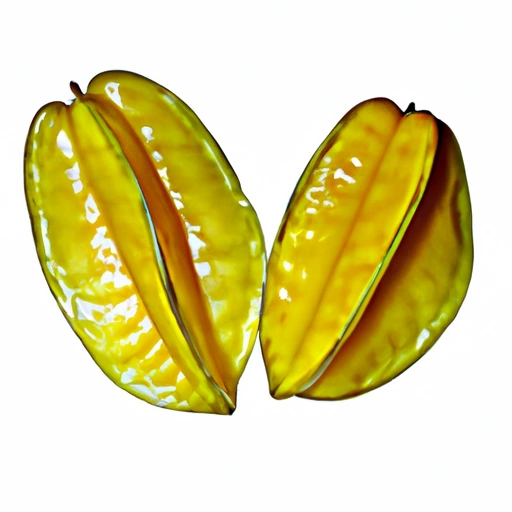Carambola
Description

Carambola, also known as star fruit for its distinctive shape when sliced, is a tropical fruit native to Southeast Asia. It has a waxy, yellow to green skin and a crisp, juicy flesh with a mildly sweet and sour flavor that is reminiscent of citrus fruits, apples, and grapes. This fruit is becoming increasingly popular in culinary circles around the world, not only for its unique appearance and taste but also for its versatility in recipes.
Common uses
Carambola is enjoyed in a variety of culinary applications. It is often eaten raw, added to salads for a refreshing crunch, or used as a garnish due to its ornamental star shape. The fruit is also cooked down into jams, preserves, and chutneys. In some cuisines, slightly underripe carambola is used to impart a sour note to savory dishes and stews.
Nutritional value
Calories
A 100g serving of raw carambola contains approximately 31 calories (130 kJ).
Protein
This serving size provides about 1 gram of protein.
Fat
Carambola is very low in fat, with less than 0.3 grams per 100g serving.
Carbohydrates
It contains about 6.73 grams of carbohydrates, predominantly from sugars and dietary fiber.
Vitamins
Carambola is rich in vitamin C, providing about 34.4 mg per 100g serving, which is about 57% of the Recommended Dietary Allowance (RDA). It also contains small amounts of B vitamins such as folate.
Minerals
The fruit is a source of minerals like potassium, with a content of 133 mg per 100g serving, and contains trace amounts of magnesium and phosphorus.
Health benefits
Carambola is low in calories and rich in dietary fiber, which is beneficial for digestive health. The high vitamin C content supports the immune system and acts as an antioxidant. Additionally, the fruit's potassium content may contribute to cardiovascular health by helping to maintain normal blood pressure levels.
Potential risks
People with kidney problems should be cautious with carambola, as it contains caramboxin and oxalic acid, substances that can be harmful in cases of renal failure. It is advised to consult with a healthcare provider before consuming star fruit if you have kidney-related health issues.
Common recipes
Common recipes featuring carambola include fruit salads, tropical drinks, star fruit tarts, and exotic salsas. It is also used in sweet and sour sauces and as a topping for desserts.
Cooking methods
Carambola can be eaten fresh or cooked. Cooking methods include poaching, sautéing, and grilling, which can bring out a different flavor profile of the fruit.
Pairing with other ingredients
Carambola pairs well with seafood, poultry, and pork. It complements other tropical fruits like mango, pineapple, and coconut. Herbs and spices such as mint, cilantro, and ginger also accentuate its flavor.
Summary
Carambola, or star fruit, is a vibrant and versatile ingredient that adds a unique twist to a variety of dishes. Its sweet-tart flavor and nutritional benefits make it a favorite among food enthusiasts worldwide. When using carambola, it's essential to consider both its culinary potential and its health implications, especially for those with certain dietary restrictions.